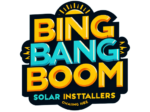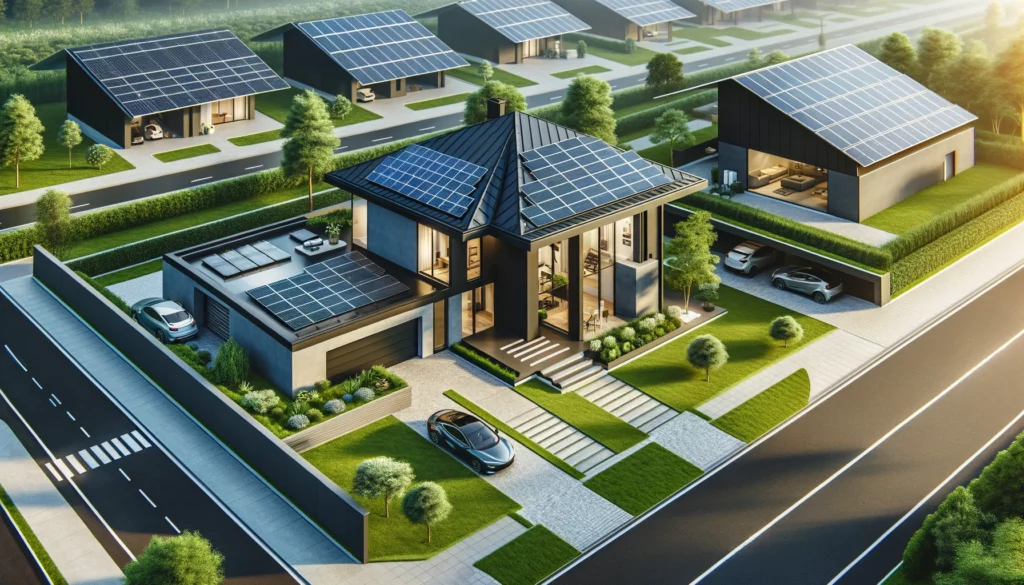As the world faces the undeniable effects of climate change, the need for sustainable energy solutions has never been more urgent. Solar energy, harnessed from the abundant power of the sun, stands out as a critical player in the transition to green energy. This blog post delves into the best solar installations available today, highlighting the benefits of going green and offering insights into how you can make the most of solar technology for your home or business.
The Rise of Solar Energy
Solar energy has seen a dramatic rise in adoption over the past decade. With advancements in technology, solar panels have become more efficient and affordable. Governments around the world are also offering incentives and subsidies to encourage the use of solar power, making it an even more attractive option for homeowners and businesses alike.
Benefits of Solar Energy
- Environmental Impact: Solar energy is a clean, renewable source of power that reduces reliance on fossil fuels, cutting down on greenhouse gas emissions and air pollution.
- Cost Savings: After the initial installation costs, solar energy can significantly reduce or even eliminate electricity bills. Many solar panel systems have a lifespan of 25-30 years, providing long-term savings.
- Energy Independence: By generating your electricity, you become less dependent on the grid and less vulnerable to fluctuating energy prices.
- Increased Property Value: Homes equipped with solar panels typically see an increase in property value. Prospective buyers recognize the long-term savings and environmental benefits, making solar-powered homes more attractive.
Types of Solar Installations
When considering solar installations, it’s essential to choose the right type for your specific needs. Here are the most common types of solar installations:
- Rooftop Solar Panels: These are the most common and are installed on the roofs of homes or buildings. They are ideal for utilizing unused roof space and can be customized to fit various roof types and orientations.
- Ground-Mounted Solar Panels: These are installed on the ground and can be placed anywhere on your property with sufficient sunlight. They are often used when roof space is limited or when optimal sun exposure is on the ground.
- Solar Carports: These structures provide shade and protection for vehicles while generating solar power. They are an excellent option for businesses and residential properties with large parking areas.
- Solar Farms: Large-scale solar installations designed to generate power for utilities or large corporations. They require significant land area and are typically located in rural or semi-rural areas.
Choosing the Best Solar Installations for Your Needs
Selecting the best solar installation involves several factors, including your energy needs, budget, and available space. Here’s a step-by-step guide to help you make an informed decision:
Step 1: Assess Your Energy Needs
Understanding your energy consumption is crucial. Review your electricity bills to determine your average monthly usage. This information will help you decide the size of the solar system required to meet your needs.
Step 2: Evaluate Your Property
Conduct a thorough evaluation of your property to determine the best location for the solar panels. Consider factors such as roof orientation, shading from trees or buildings, and available space.
Step 3: Set a Budget
Solar installations vary in cost depending on the type and size of the system. Establish a budget and explore financing options, such as solar loans, leases, or power purchase agreements (PPAs).
Step 4: Research Solar Providers
Choose a reputable solar provider with a track record of successful installations. Read reviews, compare quotes, and ask for references to ensure you select a reliable company.
Step 5: Consider Incentives and Rebates
Take advantage of government incentives and rebates to reduce the overall cost of your solar installation. These can include federal tax credits, state rebates, and local incentives.
Maximizing Your Solar Investment
Understanding Solar Panel Efficiency
Solar panel efficiency refers to the ability of a panel to convert sunlight into usable electricity. Higher-efficiency panels produce more electricity in a given amount of space. When choosing solar panels, it’s essential to consider the efficiency rating, which is typically expressed as a percentage.
- Monocrystalline Panels: Known for their high efficiency and sleek appearance, these panels are made from single-crystal silicon. They have efficiency ratings between 15-20%, making them ideal for properties with limited space.
- Polycrystalline Panels: These panels are made from multiple silicon crystals and have slightly lower efficiency rates, typically between 13-16%. They are more affordable and are suitable for installations with ample space.
- Thin-Film Panels: Lightweight and flexible, thin-film panels are made from materials like cadmium telluride and amorphous silicon. Their efficiency ranges from 10-12%, making them less efficient but more versatile in terms of installation options.
Installation Considerations
Proper installation is crucial for maximizing the efficiency and lifespan of your solar system. Here are some key considerations:
- Professional Installation: Always hire certified professionals for installation. Proper installation ensures optimal performance and minimizes the risk of damage or system failure.
- Optimal Angle and Orientation: The angle and orientation of the solar panels significantly impact their efficiency. In the Northern Hemisphere, panels should generally face south at an angle equal to the latitude of the installation site.
- Maintenance: Regular maintenance, such as cleaning the panels and inspecting for damage, ensures the system operates at peak efficiency. Most systems require minimal maintenance, but it’s essential to follow the manufacturer’s guidelines.
Monitoring and Performance Tracking
Modern solar installations come with monitoring systems that allow you to track the performance of your solar panels in real-time. These systems provide valuable data on energy production, system efficiency, and potential issues.
- Energy Monitoring Systems: These systems display real-time data on your energy production and consumption. They help you understand your energy usage patterns and identify opportunities for further savings.
- Performance Alerts: Many monitoring systems send alerts if the system is underperforming or if there are issues that need attention. This proactive approach ensures any problems are addressed promptly, maintaining the system’s efficiency.
Future-Proofing Your Solar Investment
As technology advances, solar systems continue to improve in efficiency and functionality. To future-proof your investment, consider the following:
- Battery Storage: Adding a battery storage system allows you to store excess energy generated during the day for use at night or during power outages. This increases your energy independence and maximizes the benefits of your solar installation.
- Smart Home Integration: Integrating your solar system with smart home technology enables you to optimize energy usage and enhance overall efficiency. Smart thermostats, energy-efficient appliances, and automated systems contribute to a more sustainable lifestyle.
- Upgradable Systems: Choose solar systems that are easily upgradable. As new technologies emerge, you can enhance your system’s performance and extend its lifespan without significant additional costs.
Conclusion
Investing in solar energy is a decisive step toward a sustainable future. The best solar installations not only provide significant environmental benefits but also offer substantial cost savings and energy independence. By understanding your energy needs, evaluating your property, and choosing the right type of installation, you can make a well-informed decision that maximizes the benefits of solar power.
Going green with solar energy is more than just a trend; it’s a commitment to a better, cleaner future. Take the first step today and explore the possibilities of solar installations for your home or business. With the right approach and expert guidance, you can harness the power of the sun and contribute to a greener, more sustainable world.

